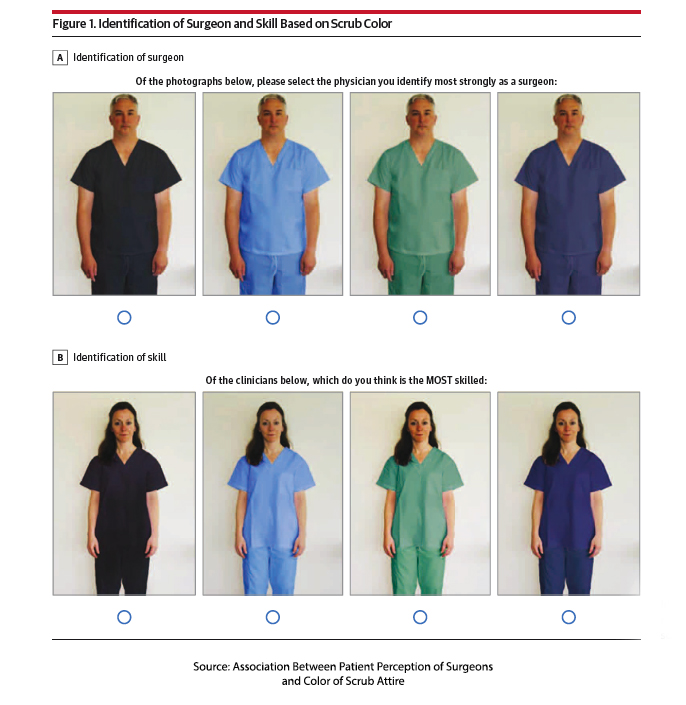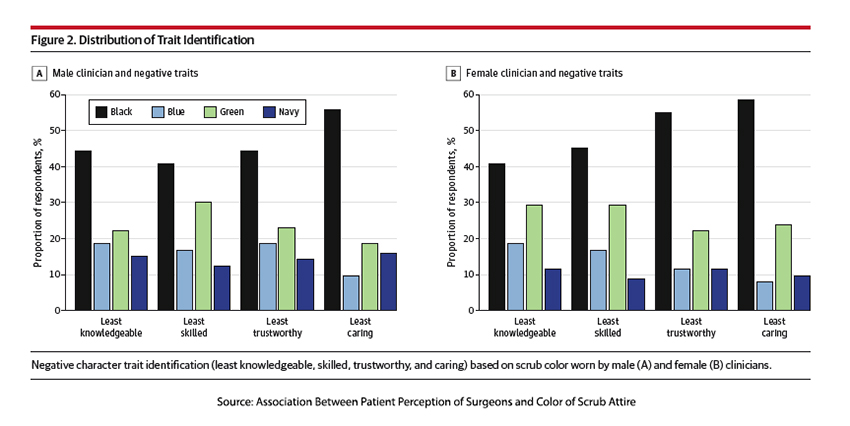Yes.
The study from the University of North Caroline Medical Center at Chapel Hill asked 113 visitors and patients over age 18 to look at this picture and answer who was the surgeon and the most skilled.
Green, the traditional color of scrubs, was chosen as the color of “surgeons” for male and female models, followed closely by blue. [1]
Blue was the color most associated with “caring” for both genders
Black fared poorly, receiving the lowest ratings for knowledge, care, trustworthiness, and skill.
Scrubs were once solely the attire of surgeons, and those were white denoting cleanliness, although after surgery, not so much. There is a story going around that the color was changed to green because it was more restful on the eyes and would allow surgeons to identify red more readily, the color of bleeding. [2] Today the  color of these near-ubiquitous outfits are often used by hospitals to denote healthcare workers' roles or service, i.e., obstetrics, radiology, and surgery. They may also be used as a health system’s brand; purple is used throughout NYU’s health system.
color of these near-ubiquitous outfits are often used by hospitals to denote healthcare workers' roles or service, i.e., obstetrics, radiology, and surgery. They may also be used as a health system’s brand; purple is used throughout NYU’s health system.
As the researchers point out, this was an exploratory study to see if there were interesting associations to be made. I guess we can look forward to more information in the future. In the meantime, we can anticipate more corporate uniformity and less individual choice in what to wear to work.
[1] One dramatic exception was the Shock-Trauma Unit at the University of Baltimore, the first actual full-time level I trauma center in the US. In this large gymnasium size room with an elevated nursing station, everyone dressed in pink scrubs.
[2] As a vascular surgeon identifying bleeding, irrespective of my scrub colors, was not difficult. Most of the bleeding we were concerned with was bleeding you could hear or that filled the abdomen like a toilet bowl.
Source: Association Between Patient Perception of Surgeons and Color of Scrub Attire JAMA Surgery DOI: 10.1001/jamasurg.2022.5837






